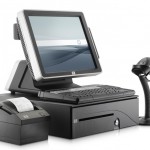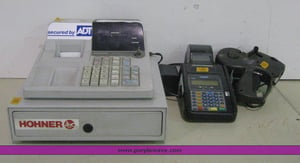 What happens when you walk into a business and see a touch screen POS System like this one? Do you walk out without making a pitch? Do you feel under-prepared to make this sale because you have to reprogram a POS System? If so, you are missing out on the most profitable segment of merchant accounts and you are not ready for the future of the payment processing industry. Today, I will provide you with a 10 step process to sell businesses with a touch screen POS system already in place.
What happens when you walk into a business and see a touch screen POS System like this one? Do you walk out without making a pitch? Do you feel under-prepared to make this sale because you have to reprogram a POS System? If so, you are missing out on the most profitable segment of merchant accounts and you are not ready for the future of the payment processing industry. Today, I will provide you with a 10 step process to sell businesses with a touch screen POS system already in place.
 Most merchant services sales professionals feel much more comfortable making a sale to a merchant that has a system that looks more like this. They love walking into a retail business or auto-repair shop that has old outdated technology and then they convince the merchant to keep their nasty old equipment and just lower their rates a little bit. This explains why most merchant sales people sell a lot more retail than restaurant locations, even though restaurants are far more profitable as a general rule. In today’s post, I will outline the very simple 10 step process of converting an existing touch screen POS System over to your processing. Let’s get started!
Most merchant services sales professionals feel much more comfortable making a sale to a merchant that has a system that looks more like this. They love walking into a retail business or auto-repair shop that has old outdated technology and then they convince the merchant to keep their nasty old equipment and just lower their rates a little bit. This explains why most merchant sales people sell a lot more retail than restaurant locations, even though restaurants are far more profitable as a general rule. In today’s post, I will outline the very simple 10 step process of converting an existing touch screen POS System over to your processing. Let’s get started!
Step #1 – Identify the supplier of the POS System. Just like with standard merchant accounts, you will see Hypercom or VeriFone terminals running Global or TYSYS software, but the merchant is not dealing directly with those hardware companies. The processing company is the true competitor. In the case of a touch screen POS System, the true competitor is the POS Solution provider. Many times, these are small local companies that have a handful a very profitable local accounts. Start by asking this simple question, “Who installed your POS System?”
Step #2 – Understand the current relationship with this company. Ask the merchant questions like, “Do you still work with them now?” or “Do you have a service contract with them to make sure your POS System is operating correctly?” You are trying to figure out how deep the relationship goes.
Step #3 – Ask about the credit card processing. If they like their touch screen system the odds of them switching to a system you are selling is slim to none. There is simply too much work necessary to load up a new menu, inventory, users, etc. and so unless they express disappointment in their system, I would stick with pitching merchant services. However, you need to understand who is providing the merchant services and how it integrates with their other services. Ask questions like, “Did XYZ Solutions also set up your credit card processing? Do you know who they work with?” Usually this will tell you if the merchant simply signed up through the POS Solution provider without much thought meaning their pricing is probably very high.
Step #4 – Gather the basic information you need. Here is the info you must gather to assess if you can service their account.
- What is the name of the software they are using? This is the most important piece of info. Once you have this, you will be able to find out if you can service the account by reprogramming the merchant services parameters.
- What is the hardware you are using? Usually this info is right on the front of the touch screen. This will help you identify some companies that provide free hardware like Harbortouch and some of the tablet systems where you can’t reprogram the processing without replacing the system.
- Who would you call if your system broke down? Here is where you get the specific information about the tech support department at the current company. This information will be vital, especially if you do make the sale in order to facilitate a smooth transition.
Step #5 – Talk to your processing company. Now it is time to take the information above and speak to your credit card processor to find out if you can service this merchant account. A good processor will be able to take the three pieces of information above and get back to you quickly with a “Yes” or “No” on whether they support this software. In my experience, most processors can support about 80% of the software / hardware on the market.
Step #6 – Do a standard merchant services quote. If the software is supported, it is time to move forward with a standard quote like any other merchant. Get a processing statement and work with your processors statement analysis department to create a custom quote and show some serious savings to the merchant.
Step #7 – Make the sale. Now, this is a little risky but I have found this is the best way to do it. Rather than reaching out to the current solutions provider to find out what all they will charge in terms of fees to do the switch, etc. I like to start by making the sale and showing the merchant how much they will save. You need the merchant on your side.
Step #8 – Call the solutions provider with the merchant present. Now that the merchant is on your side, call the solutions provider and ask them what information they will need on the “VAR” sheet in order to change the payment processing parameters so that the credit card transactions go through your processor.
Step #9 – Get ready to fight for your new client. Make sure you get the client on your side because it might get a little nasty with the current solutions provider. Most of them get the merchant to sign up for processing at a ridiculously high rate and they don’t want to lose those profits. Often they will come back with a pitch like, “This is going to be such a pain to switch, how about we match this new guy’s price for you Mr. Merchant?” Prepare your client for this and get them to commit to the switch before you make the phone call. Explain that their current company has been overcharging them for months or even years and so unless they are prepared to offer a large refund for overcharging, the merchant would be rewarding their behavior if they stayed with them.
Step #10 – Sit back and enjoy the profits! The transition phase requires a lot of extra work on your part. You will spend a lot of time on the phone arguing with current providers and a lot of time with your new client re-assuring them that they made the right choice. The good news is that once the switch is complete, you have a lifelong customer with good volume. All of their technical issues will end up going to the POS Software / hardware vendor and not you, so this is the best form of residual income.
I hope these 10 steps help you sell more merchants this month!
James Shepherd
Read previous post: Surviving the First Year Selling Merchant Services
Surviving the First Year Selling Merchant Services
Read next post: Getting Out in the Field
Getting Out in the Field